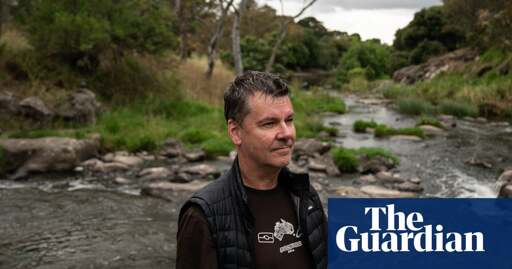Almost 185 years later, Trevor Lithgow, a biochemist at Monash University, and a student in his charge visited that same lovely stream, bent down at its bank with an empty flask attached to a broom pole, and retrieved a double shot of water. They bundled the sample into a bag and drove it back to examine at their laboratory.
There, they mixed the sample with a culture of Klebsiella pneumoniae, a rod-shaped bacteria, prevalent in nature, and one that colonises human stomachs and lines our intestines. It forms snot-like colonies, gobbling up and fermenting lactose to fuel itself. Usually, Klebsiella is harmless.
But in certain situations, Klebsiella can establish itself outside the gut – and then it becomes a threat. “You would not want to have an infection that’s driven by Klebsiella,” Lithgow says.
Klebsiella is defined by the World Health Organization as a “priority pathogen”. Some prefer to call it a “superbug”. It’s a bacteria that poses a major threat to global health because some strains have evolved to evade our most potent drugs, in a process known as antimicrobial resistance (AMR).



I remember reading a paper on phage therapy ages ago. Iirc the implementation difficulty was that you have to culture the bacteria from the patient then use that culture to breed the phages. Culture & Sensitivity testing alone is already usually a 24h+ process and even a tricky sample collection process; at least when I was a phlebotomist 10 years ago it was the most complicated process I was qualified to perform.
On the other hand phage therapy is great because you don’t really have resistance issues and they’re not going to be harmful to the person. Viruses are extremely host specific compared to bacteria so if they feed on a certain type of bacteria they’re unlikely to be or are even incapable of hurting a human. Vancomycin on the other hand requires regular peak and trough testing to make sure the person is getting enough to kill bacteria but not enough to kill the person.
The issue being that in addition to the culture they then have to breed the phages with a sample of the bacteria collected from the patient. You could maybe develop a “library” of phages to try but I feel like you’d need to keep getting population samples because they’re that host specific. I’m also not sure how long breeding the phages would take vs how long it takes to test antibiotic sensitivity.
Phage therapy is already very normal in Poland and Russia, so must be ways to overcome these issues
yes! that was mentioned in the article but I wasn’t sure if i was remembering it correctly. I don’t think it gave an explanation of why though.
Regulatory issues in western countries mean every unique phage genetic sequence is counted as a discrete separate drug that needs to go through approval
These issues don’t exist in those countries
see that doesn’t quite make sense because we do a bunch of other therapies that are similar using both larger organisms (maggots, leeches), other microorganisms (probiotics) and even microorganisms formulated from outside of the patient’s body such as fecal transplants from adult to adult in the same household but in particular from mother to baby. So it wouldn’t be the only situation in which we breed organisms from outside the patient’s body or even obtain custom microorganisms specific to the patient’s needs.
Same thing got in the way of the guy genetically fixing dalmatians and other dogs. Every dog needed its own clinical trials as they are defined as drugs. David Ishee I think was his name
Gonna have to argue with the FDA on that one
Yeah phages have extreme specificity just like most other viruses, and that is both a really big advantage and a really big challenge, on the one hand if you get it right you rest assured it will absolutely not harm anything other than that one single target bacteria you breed it against, no antibiotics can be nearly as safe in comparison, but then on the other hand like you said it requires you to take time and lots of work to breed a culture first before it can be used at all :/
Maybe in the future this process can be automated, and maybe we can even do genetic engineering to create engineered phages on demand in an artificial process that’s much faster… Oh well one could dream lol
How about a big spicy super phage cocktail tailored to many different strains of the bacteria under question while a specialised culture is pending? May get a match, no harms if it doesn’t
I think that’s exactly what people were referring to when they say “culture for specific bacteria”. Remember it’s not a bacteria species that phages target, rather it’s molecular signature on certain bacteria they target, and it’s a constant arms race in the nature, so there could be endlessly many possible kinds of molecular signatures found on what’s technically the exact same species of bacterium.
So they are not “breeding a phage culture for one bacteria”, rather they were breeding phage culture for the 1000 or so kind of molecular signatures, out of millions of trillions possible ones.
Exactly, spot on. A cocktail of phage just for that one bacterium would surely get a good hit rate when diverse enough
I was gonna say I wonder how advances in dna / rna manipulation will affect that but now we’re getting into a topic that I last interacted with in like 2-3 101-102 level college courses 5+ years ago 😅